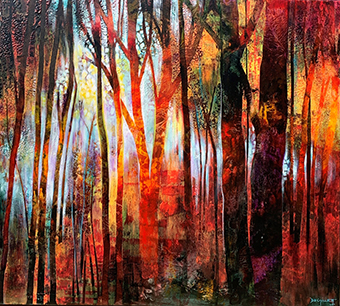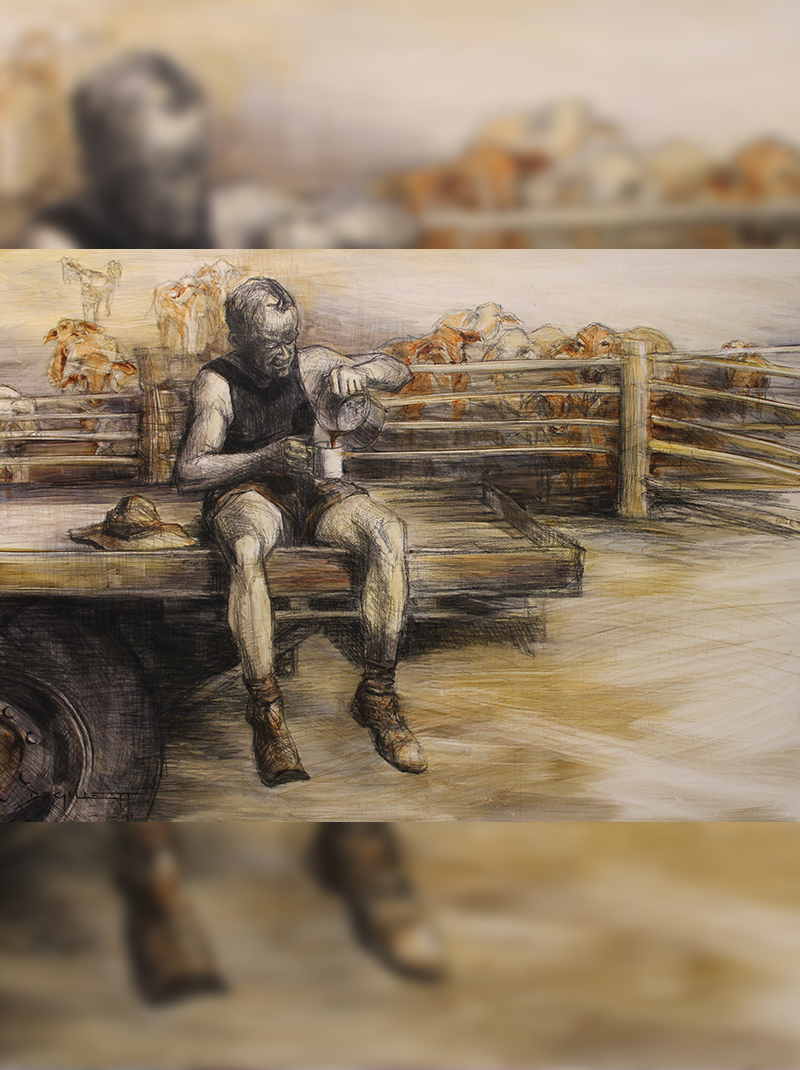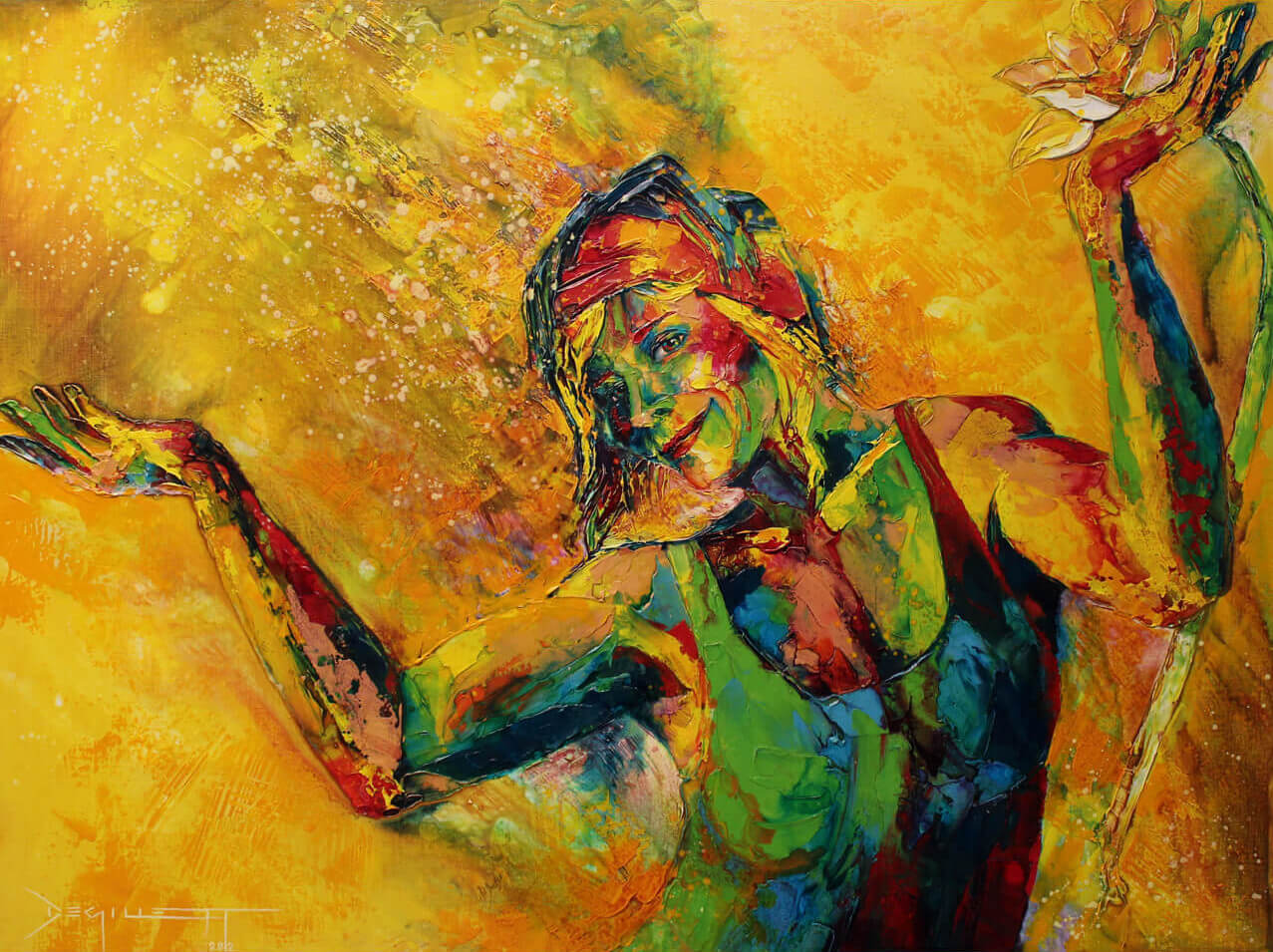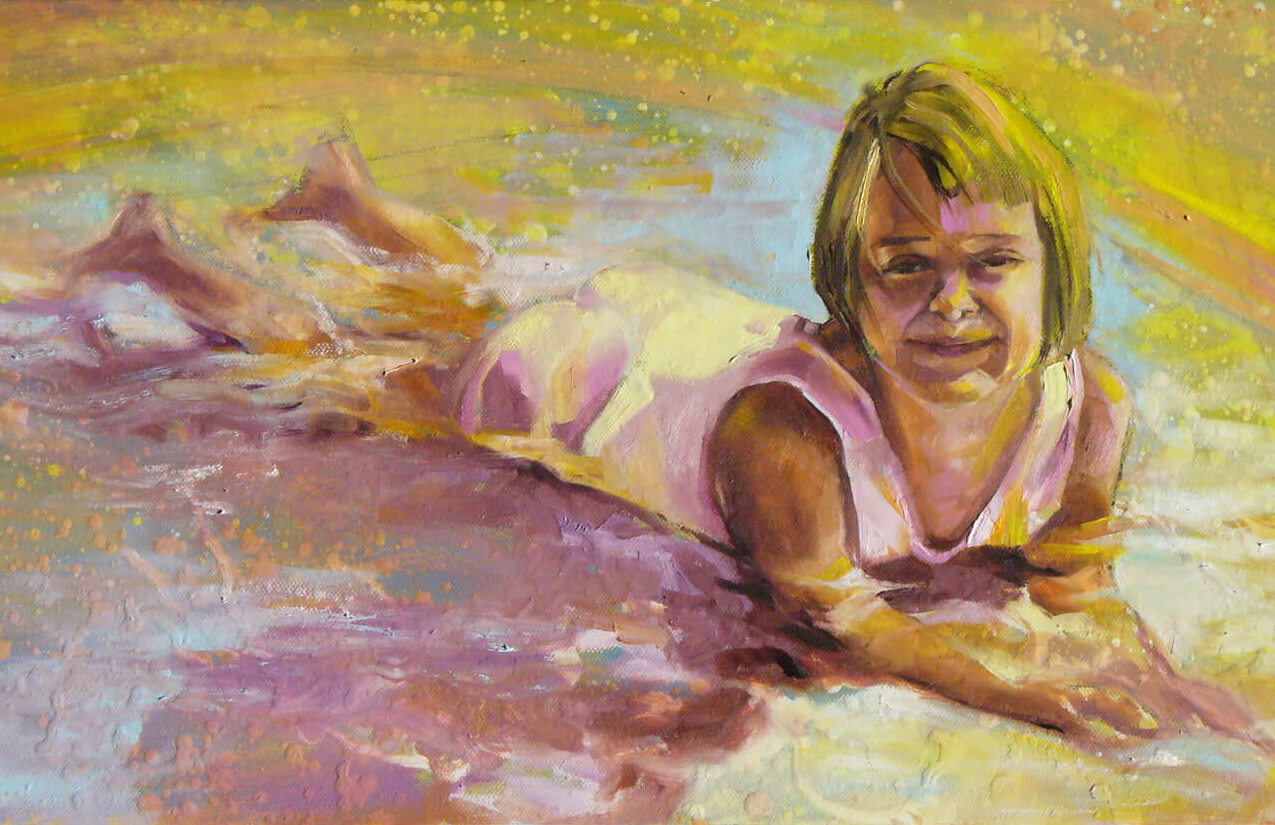QUESTIONS
Describe your art practice in single words.
Energetic. Expressive. Layered. Colourful. Textured. Celebratory. Optimistic.
What inspires you?
Capturing my idea on canvas. Once I’ve come up with a concept, I am so excited to see how that works out. I love the materiality of pushing paint around, and I’d paint all day every day if only I could!
How do you make the leap from source material to your own vibrant interpretation of that subject?
I count myself an expressionist. The way a subject makes me feel is what I am trying to paint about, so that the viewer feels that way too. To that end, I’ll exaggerate wildly. If what I love is the delicacy of something, I’ll fill that area with delicate, lacy pattern, for instance.
What drives your choices in materials?
Archivability. If it’s not going to last, I don’t want it on my canvas. Good quality materials are essential, as is layering in ways that won’t fall apart over time.
How long have you been making art?
Since the moment I realised at age 8 that I could be an artist, if only I worked at it. 5 decades later, I’m still a long way from making all the art I want to! I do also remember being on the beach at 4yo and feeling that sandcastles were below me- I’d make sand portraits instead.


Name the best and the worst thing about being an artist.
Worst thing is how life gets in the way of studio time, and how difficult it is to prioritise art making. Best thing is the last, totally focussed hours of making a painting, teasing it out of the canvas to become everything I had in mind when I began. I love the idea that having a De Gillett on your wall might mean you feel more positive or smile more often.
What’s your favourite subject?
I’m a painter, so light is always my main subject. Light and movement, with great attention paid to line accuracy. Portraiture holds a special place in my heart, I think simply because it is so very challenging. I started with painting Australian birds, and it was the movement that attracted me to them. I’m also really interested in the way things sound, and getting those sounds captured in my mark making.
What media do you work in?
Acrylics, mixed media, drawing. Oils sometimes, when I need those carefully controlled tonal gradations that are such a pleasure with oils, and so difficult with acrylics.
Which medium do you prefer?
Mixed media and acrylics right now. I’m loving the way I can layer conceptual depth into a painting with printed materials, and the accidental mark-making that happens on a textured surface. Mixed media gives me the option of adding drawn elements too, and I love to do that.
Which aspects of your practice are you proudest of?
That in painting with ink the way I have developed, and in inventing new techniques like gesso soup I have advanced the techniques available to painters. I’m pretty proud of my persistence, and that Graham and I have created a place in Arts Tree where people can learn the practicalities of painting and drawing.
How has your practice changed over the years?
Capturing my idea on canvas. Once I’ve come up with a concept, I am so excited to see how that works out. I love the materiality of pushing paint around, and I’d paint all day every day if only I could!
How do you make the leap from source material to your own vibrant interpretation of that subject?
I began with clay sculpture as I recovered from a long battle with Chronic Fatigue Syndrome. As my health improved, I worked in pastel for a while, and then discovered paint around 2002. Working transparently with glazing enabled me to explore portraying movement, which I had seen and adored in the Futurist movement. My work has been described as “organic neo-futurism”, which is very apt. Over time, it has become more layered, and more highly textured.
Do you accept commissions?
I do if I find the subject interesting. I won’t precisely repeat an existing painting though- all the energy is used up the first-time round. Sometimes I work in a series of the same subject, because there’s something there that fascinates me.
Why do you teach?
I am very aware of the doors that artmaking has opened for me in my life. If I can open those same doors for my students, then that seems like a life well lived to me.
Where do you teach?
All my tutoring happens through Arts Tree, the art school my husband Graham and I founded in 2012. There are online and in-studio options available & all the detail is at www.artstree.com.au

#brisbaneartist #degillettcox #coloursofexuberance



